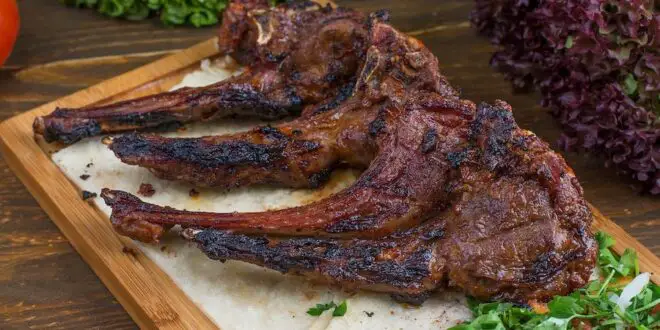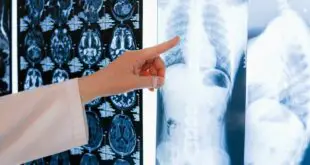It is widely known that humans can consume bone marrow; the question remains: can humans eat bones?
Throughout history, humans have used bones to make bone broth for essential minerals and craft weapons.
Today, we often toss aside bones after eating the meat, but could they be more than just leftovers?
While bones are typically associated with being hard and indigestible, it is worth exploring whether we can consume and gain nutritional value from them.
In this blog, we’ll look at the nutritional content of the bone, how to prepare the bone broth, the health benefits of eating bones, and much more. But before that, let’s first answer our main question.
Can Human Eat Bones?
The answer is yes and no. For small animals and birds with ‘weak’ bones, depending on the way they’ve been cooked, they can be eaten. For example, you can easily eat the bones of a fried chicken, but remember to chew it properly to avoid choking hazards.
On the other hand, we have some animals with large and hard bones that humans cannot simply consume. A good example is a leg bone from a cow.
Our jaws don’t have the force to crush and chew such bones. However, they can be processed and used for nutritional value and flavor.
Why Can’t Humans Consume Bones?
Bones are made mostly of proteins and minerals but don’t have the important fatty acids and carbohydrates our bodies need to stay healthy.
Additionally, eating bones can be risky because they can break into small pieces that might cause choking or block our digestive system, which can be very harmful.
The material bones comprise is very tough, and our stomachs can’t easily break it down. So, when we eat bones, they usually go through our digestive system without getting digested.
This can lead to small pieces of bone scratching or cutting the inside of our digestive tract, which can be painful and lead to other complications.
Additionally, bones can sometimes have leftover harmful substances from the animal they came from. These substances can harm our health and make us sick if we eat them.
What Nutrients Can You Get From The Bone? And Their Health Benefits
Bones, though often overshadowed by the succulent meat they support, hold a treasure trove of essential nutrients waiting to be discovered. Beyond their structural role in the body, bones are reservoirs of vital minerals and vitamins.
- Calcium – Calcium is perhaps the most well-known nutrient found in bones. It is essential for the development and maintenance of strong and healthy bones.
Calcium also plays a crucial role in muscle function, nerve transmission, and blood clotting. Lack of calcium can lead to osteoporosis, where the bones become weak and brittle.
- Phosphorus – It works with calcium to build and strengthen bones and teeth. Phosphorus is also involved in energy production, DNA synthesis, and cell repair.
- Sodium – Sodium, although often associated with high blood pressure and heart disease when consumed in excess, is still an essential nutrient for our body.
It helps to maintain fluid balance within cells and supports nerve function. While bones contain some sodium naturally, most of our sodium intake comes from salt added to our food.
- Magnesium – Magnesium is a mineral involved in over 300 biochemical reactions in our body. It helps in bone formation and maintenance by assisting in the absorption and metabolism of calcium.
Magnesium also helps regulate blood pressure, supports muscle function, and aids energy production.
- Potassium – Potassium helps balance fluids and electrolytes in the body. It supports proper muscle function, nerve transmission, and heart health.
(The below nutrients are found in the bone marrow and not specifically the bone itself. And since the bone marrow is found in the bones, let’s have a look at the nutrients available and how they can help your body)
- Vitamins A – Vitamin A maintains a healthy vision, skin, and a strong immune system. It supports the growth and maintenance of bones and teeth. Bone marrow provides a natural source of this fat-soluble vitamin.
- Vitamins B2 – B2 play a pivotal role in energy production by converting food into energy. It also helps maintain healthy skin, eyes, and nerve functions. In the bone marrow, it contributes to overall metabolic health.
- Vitamins B12 – B12 are essential for red blood cell formation, neurological function, and DNA synthesis. It also aids in maintaining healthy nerves and contributes to overall bone health.
- Vitamins E – Vitamin E is an antioxidant that helps protect cells from damage caused by free radicals. It supports immune function and skin health, which are vital for overall well-being.
- Omega-3s – These fatty acids in bone marrow are renowned for their anti-inflammatory properties. They support heart health and brain function and may even play a role in maintaining bone density.
- Omega-6s – Omega-6 fatty acids, when balanced with omega-3s, contribute to heart health, brain function, and overall well-being. They play a role in reducing inflammation in the body.
- Iron – Iron is essential for carrying oxygen in the blood and supporting energy metabolism. Bone marrow provides a source of heme iron, which is highly absorbable by the body.
- Selenium – Selenium is a powerful antioxidant that supports immune function, thyroid health, and DNA synthesis. It also plays a role in protecting cells from damage.
- Zinc – Zinc is involved in numerous biochemical processes, including immune function, wound healing, and DNA synthesis. It also contributes to bone health and overall growth and development.
How To Prepare Bone Broth
Animal broth is a savory liquid made by simmering animal bones, and connective tissues in water for a long time.
It extracts flavors, minerals, and nutrients from the bones as it cooks, resulting in a tasty and nutritious broth. People often use it as a base for soup stews or to sip. If you are wondering how you can prepare bone broth at your home, here is the guide;
Ingredients
- Animal bones (chicken, beef, or any of your choice)
- Water (enough to cover the ingredients)
- Salt and pepper to taste
- A handful of fresh herbs (thyme, rosemary, parsley)
- 1-2 tablespoons of apple cider vinegar
- 1-2 onions, peeled and quartered (optional)
- 2-3 cloves of garlic, peeled and crushed (optional)
Procedure
Step 1: Preheat your oven to 450°F (230°C). Place the bones on a baking sheet and roast them for about 20-30 minutes until golden brown. This step adds flavor to the broth.
Step 2: In a large stockpot, add the roasted bones, chopped vegetables, garlic, fresh herbs, bay leaves, and apple cider vinegar.
Step 3: Pour enough water into the pot to cover all the ingredients completely. Bring it to a boil, and then reduce the heat to low. Let it simmer gently for 8-24 hours. The longer you simmer, the richer the flavor.
Step 4: After simmering, strain the liquid to remove solids. You’ll be left with a flavorful bone broth. Season it with salt and pepper to taste. You can use it immediately for soups or stews or store it in the fridge or freezer for later use.
Adaptations Of Animals That Can Eat Bones
Animals that can eat bones have various adaptations that enable them to do so effectively. These adaptations often involve specialized anatomical features and digestive capabilities. Here are some common adaptations seen in such animals:
Strong jaw and teeth – Animals that consume bones typically have strong jaws and sharp teeth designed for crushing and grinding. These teeth are adapted to break bones into smaller, manageable pieces.
Powerful digestive enzymes – Some bone-eating animals, like hyenas, have powerful digestive enzymes in their stomachs that can break down bone matter. These enzymes help dissolve bone minerals and extract nutrients.
Efficient digestive systems – Many bone-eating animals have longer digestive tracts, allowing more time for the slow digestion and absorption of nutrients from bone fragments.
Gizzard – Birds, such as vultures, have a muscular gizzard that helps grind bones. This mechanical processing aids in digestion.
Regurgitation – Some birds, like owls, regurgitate indigestible bone and fur in pellets, preventing these materials from accumulating in their digestive systems.
Conclusion
Can humans eat bones? While it is technically possible for humans to eat bones, it is not recommended or necessary for a healthy diet.
Bones can be consumed in the form of bone broth. However, eating bones directly can pose a choking hazard and may not provide significant nutritional benefits.
It is important to focus on a balanced diet that includes a variety of foods from different food groups to ensure optimal nutrition.
Rather than directly consuming bones, obtaining essential nutrients from them is advisable by preparing a bone broth.
 Being Human
Being Human




